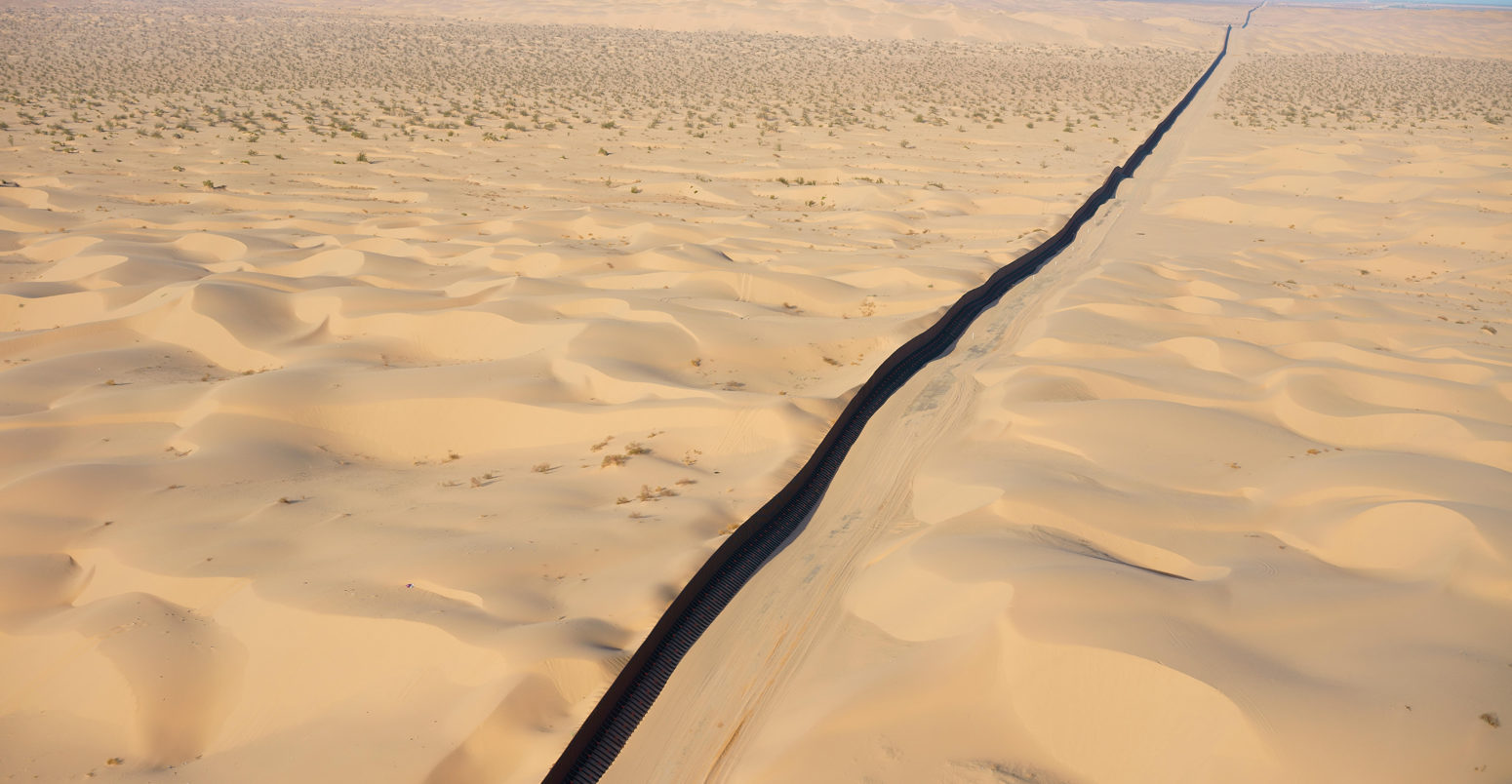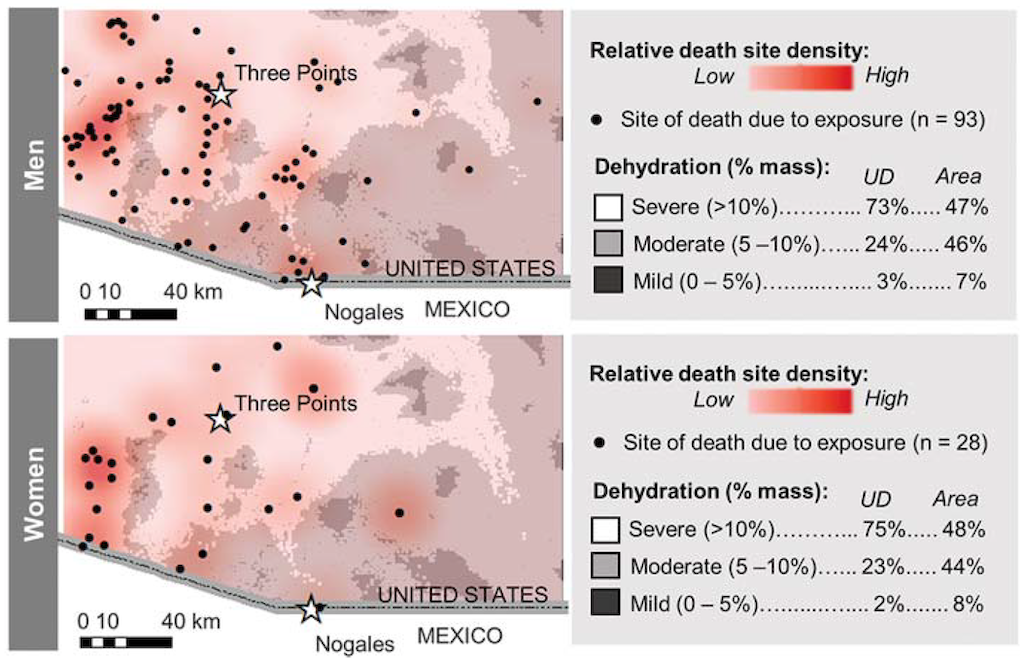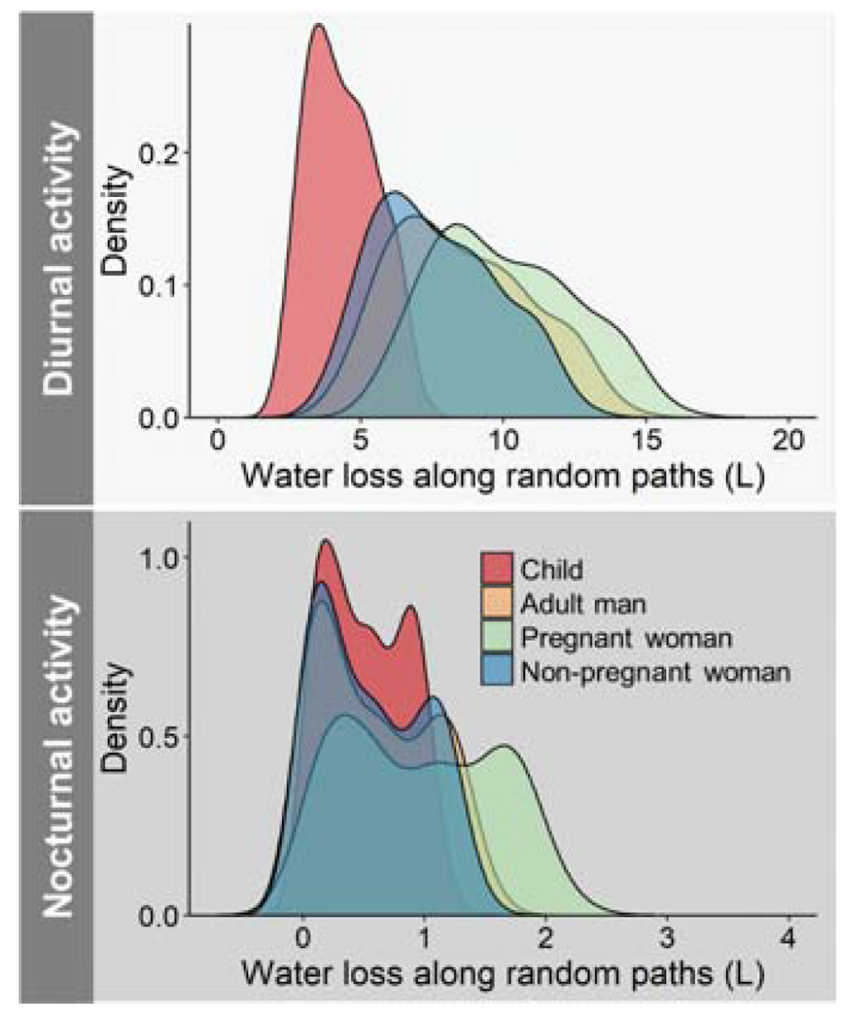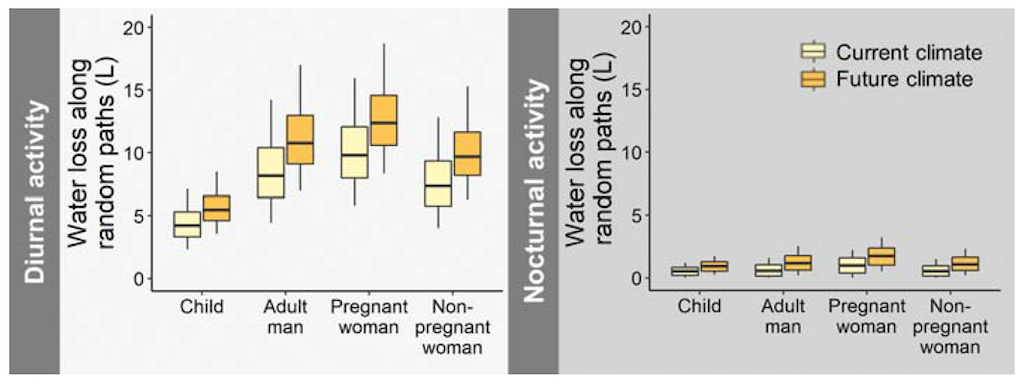
Global warming will make undocumented migration into US ‘increasingly dangerous’
Ayesha Tandon
12.16.21Ayesha Tandon
16.12.2021 | 7:00pmThe already perilous desert crossing from Mexico to the US will become more dangerous as the climate warms, new research says.
The research, published in Science, finds that dehydration is already a leading driver of mortality in people crossing on foot from Nogales in Mexico to Three Points in Arizona.
It explains how extreme heat and water scarcity have claimed the lives of thousands attempting to enter the US from Mexico and quotes undocumented migrants, who confirm that dehydration, disorientation and organ failure are “common elements” of the journey.
The authors go on to show that as the climate warms, water loss will become even more extreme. They conclude that in 30 years, even under an “intermediate mitigation” scenario, people would be expected to lose one-third more water on a journey across the US southern border than they would today.
One expert, who was not involved in the study, tells Carbon Brief that the paper makes for “bleak” and “tragic” reading – but that it is “important” work.
However, he emphasises that political decisions also play a part adding: “Those specific locations of the desert are dangerous and that is determined by the weather and climate. But the reasons people are in those specific locations are the result of myriad political decisions.”
The desert crossing
The US has been the main destination for migrants since 1970 and is currently home to an estimated 40 million people who were born abroad. However, migrating to the US through legal channels is a complex and expensive process, which can take years or even decades to complete, and completely bars many people from entering the country.
As such, hundreds of thousands of people enter the US every year without official documentation – many travelling on foot from Mexico. However, this journey is dangerous. Over 1998-2015, more than 5,500 people died attempting to cross the US–Mexico border – the majority in the Arizona desert.
This study focuses on a portion of the Tucson Sector, a US Border Patrol jurisdiction that runs from Yuma, Arizona, to the New Mexico border. According to the paper, the region “has been a primary crossing point for migrants for nearly two decades” and “is characterised by the highest number of known border-crossing fatalities”.
To determine which parts of the crossing are the most dangerous, the authors compiled a geo-referenced record of adult male and female deaths recorded over 1981-2019 – focusing on May-September, when the weather is the hottest and driest and the most migrant deaths occur.
They then used the Niche Mapper biophysical model to calculate the amount of water that people lose on different parts of the journey, to determine which areas drive the greatest level of dehydration.
The authors classify different levels of water loss, ranging from “severe dehydration”, in which people lose over 10% of their body mass in a single day from water loss, to “mild dehydration” in which people lose 0-5%.
The plot below shows recorded deaths of 93 men (top) and 28 women (bottom) who were travelling on foot in southern Arizona. The black dots indicate individual deaths, while red colouring indicates regions in which deaths are most likely to be recorded. White shading indicates “severe dehydration”, while black indicates “mild dehydration”.

The map shows that more men and women died in “severe dehydration” regions. Dr Reena Walker – a researcher at the University of Idaho and co-author on the study – tells Carbon Brief that “the extreme climatic conditions in the Sonoran desert push the limits of human tolerance and explain patterns of migrant death”.
Prof George Havenith is the director of the Environmental Ergonomics Research Centre at the University of Loughborough, and was not involved in the study. He tells Carbon Brief that high temperatures and exertion from walking through the desert can “put a strain on the cardiovascular system” as the heart tries to pump blood to the surface of the skin to help with heat loss.
As dehydration reduces the volume of blood in the body, peoples’ brains can be affected, leading to heat stroke, he says. He also notes that the danger can be worse for migrants travelling long distances:
“We are looking at people that may already have travelled quite a distance in less than ideal circumstances. So many may not be fully healthy to start with. Exposure to desert conditions while having to walk through difficult terrain will put a substantial load on them.”
The study includes quotes from migrants who made the crossing, describing their experiences. One of this individuals is Lucho, a 47-year-old migrant from Jalisco, Mexico, who explained the extent of dehydration he faced during his crossing in an interview in June 2009:
“We were dying of thirst. I was hallucinating at that point. We were surrounded by dirt but I kept seeing water everywhere in the desert.”
Future migration
For more detailed information on water loss under current climatic conditions, the authors modelled a range of random one- and-two-day walking routes between Nogales in Mexico and Three Points in Arizona, and calculated the water loss that the average man, woman, pregnant woman or child would experience throughout the journey.
The plot below shows the water loss during the day (top) and at night (bottom), for a child (red), man (orange), pregnant woman (green) and non-pregnant woman (blue).

The authors find that, on average, a 69kg pregnant woman would be expected to lose 10.8 litres of water during a day-time journey, while a 19kg five-year-old would lose 1.3 litres. They also analyse the months separately and find that all demographic groups see the most severe water loss in June.
Walker tells Carbon Brief that demographic groups have different water loss rates because they “each have different average body sizes and metabolic requirements, factors that directly affect how people thermoregulate”.
The study adds:
“In the absence of water replacement by drinking, these rates of evaporative water loss are sufficient to cause severe dehydration and a diversity of associated conditions such as renal failure, electrolyte abnormalities, uremia, and coronary and cerebral thrombosis that are likely the proximate causes of many migrant deaths.”
The study then notes that, as the planet warms, the desert route from Mexico to the US is likely to become drier and hotter, making it a more inhospitable environment for migrants attempting the crossing.
To determine how desert conditions will change over the next 30 years, the authors use projections from a range of climate models and the mid-warming RCP4.5 pathway, where global average temperature rise reaches approximately 2C above pre-industrial levels around the middle of this century. They then compare the water loss that people experience journeying across the US border in today’s climate to water loss if the same journey were made in 2050.
The plot below shows expected water loss for a child, man, pregnant women and non-pregnant women during the day (left) and night (right) during an average crossing, in the current climate (light yellow) and a modelled “2050 climate” (dark yellow).

The authors predict that warming will increase the average “physiological cost” of migration by 30-34% by 2050, under RCP4.5 – with notable increases in both day-time and night-time water loss across men, women and children.
Alex Randall is a leading expert in climate-driven migration and displacement at the Climate and Migration Coalition and was not involved in the study. He tells Carbon Brief that these results “fit with what is commonly understood by both NGOs and experts about the US-Mexico border – that more people die making that journey in places that are hotter and drier”. He adds:
“The point that climate change will make some of those locations even more dangerous is a good one. This is a dimension to the climate / mobility debate that doesn’t get much attention. Most of the discussion is on the ways climate will act as a driver of mobility.”
Walker also says that the study addresses a “knowledge gap”, noting:
“While most causes of preventable human death are extensively studied, there has been little empirical work investigating the physiological challenges faced by undocumented migrants crossing the southern US border.”
A political issue
The numbers in this scenario present a “best-case scenario” for water loss, the authors emphasise. For example, Walker tells Carbon Brief their models “do not account for potential chronic and multigenerational health outcomes that we know can result from periods of extreme physiological stress”.
Randall tells Carbon Brief that the findings of this study are “tragic” and that the paper makes for “bleak reading” – but that it touches on important political considerations:
“I think it’s an important piece because of some of the political issues it touches on around border control and surveillance. There is an interaction between political decisions about border policing and the physical environments that migrants then find themselves in as a result of those policies.”
For example, while the models assume a maximum journey length of two days, the authors acknowledge from interviews with migrants that journeys of up to two weeks are “not uncommon” – because people rarely take a direct path to their destination.
In 1994, the US Border Patrol adopted a strategy called “Prevention Through Deterrence”, which aims to deter undocumented immigrants from Mexico by fortifying key points. However, this move has pushed many migrants to make more dangerous crossings at regions such as the Chihuahuan and Sonoran Deserts, the study says.
As such, crossing the southern US border on foot forces undocumented migrants to walk a delicate line – balancing efforts to avoid patrol officers through circuitous routes, with needing to avoid severe dehydration by completing the journey quickly. Lucho explains why walking the “easy” route is not feasible:
“You need to put yourself into the most difficult places that you can where [Border Patrol] can’t get to. You understand? Where there are lots of trees, mountains, rocks…off the trail. That’s where you need to go. If you walk in the easiest places, they will catch you quick.”
Randall tells Carbon Brief that making the journey more dangerous is a deliberate strategy to keep undocumented migrants out of the US:
“The trend has been to force migrants into increasingly dangerous physical environments, or to remove assistance and rescue from those environments to vastly increase risk. Dangerous seas and deserts become fences and walls…It is political decisions that push people into these dangerous locations.
“Yes, those specific locations of the desert are dangerous and that is determined by the weather and climate. But the reasons people are in those specific locations are the result of myriad political decisions.”
Campbell-Staton et al (2021), Science, Physiological costs of undocumented human migration across the southern United States border doi:10.1126/science.abh1924.
-
Global warming will make undocumented migration into US ‘increasingly dangerous’

